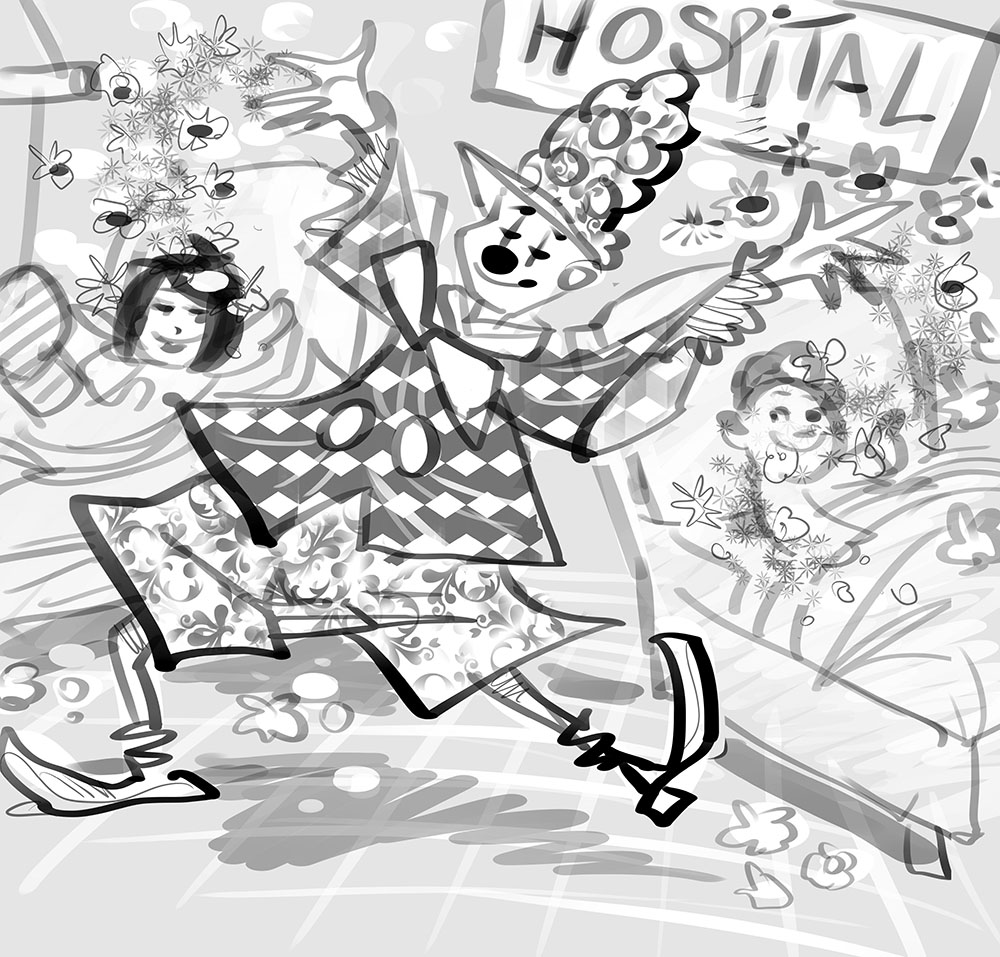By Marilyn Tran

I remember being a fourth-year intern as a naturopathic medical student and seeing my own patients for the first time. No doubt, it was an intimidating experience—if not for others, definitely for me.
Of course, the school did their best to make the process as smooth as possible. I began shadowing in my third year, sitting in on visits led by the fourth-year interns,
By Marilyn Tran

I remember being a fourth-year intern as a naturopathic medical student and seeing my own patients for the first time. No doubt, it was an intimidating experience—if not for others, definitely for me.
Of course, the school did their best to make the process as smooth as possible. I began shadowing in my third year, sitting in on visits led by the fourth-year interns, and when those fourth-year students graduated, these patients fell under my care. Since I had already grown accustomed to these patients, it was easy for me to continue building already established relationships.
With the new patients, I began to notice my discomfort. Usually, my first thoughts revolved around how the patient would perceive me: “What will they think of me? Will they like my treatment plan? Am I going to be able to help them?”
Then, during visits with other patients, I would sometimes feel a blockage. I found myself not able to express what I really wanted to express. Eventually, I realized these patients had particular traits that reminded me of people in my own life. As a consequence, I found myself reacting to them in ways similar to how I would react to the people in my life.
Perhaps the most discomforting realization came to me when I sat with and tried to counsel a patient who was experiencing difficulties in her romantic relationship. Suddenly, I thought, “Wow! I need to apply this to myself. How can I be giving advice when I haven’t even applied it to myself?”
This realization, along with the knowledge that most physical complaints have a connection to mental and emotional imbalances, gave me the resolve to figure out and heal my own insecurities, poor attachment patterns, and childhood wounds. I believed I could take my patients only as far as I have gone myself. Thus entered mindfulness.
BRINGING MINDFULNESS INTO MY PROFESSIONAL PRACTICE
Without a doubt, nurturing my mindfulness practice has made me a better health-care practitioner in countless ways. The most obvious benefit is that I can share and teach mindfulness skills and techniques to my patients, thus providing effective tools that lead to positive outcomes.
For example, a topic that comes up often in discussions with my patients is letting go of what is not in our control. An important aspect of mindfulness practice is to accept that we cannot control the thoughts, emotions, and actions of those around us. The only control we have is in choosing how to respond to others. Herein lies another lesson: we can choose to “respond” as opposed to “react.” The difference? When we are responding, there is a pause between the stimulus and our action. This pause allows us to assess the situation more clearly and with more insight, usually leading to a more skillful action. Reacting, on the other hand, is automatic and uncontrolled. Patients who choose to adopt this practice of pausing before acting share that they feel less frustrated and more aware of their own thoughts and feelings, which allows them to act more calmly and skillfully.
This practice frees me from my own insecurities around working with patients. Rather than focusing my thoughts on what they think of my practice, I instead direct my energy towards giving them the best service possible and feeling good about it. Their opinions about whether or not my services are appreciated are outside of my control. Therefore, there is no point in being apprehensive or obsessing. With this now liberated energy, I am able to add even more value to my services.
BEING FULLY PRESENT
A cornerstone of mindfulness practice is to stay in the present moment without judgment. It is a seemingly simple practice, yet so powerful. When I am fully present and engaged with my patients, it leads to much deeper and more productive sessions. Why? I am able to see the root of the patient’s issues much more quickly, instead of being distracted by my own thoughts, details that do not really matter, or minor issues.
I also believe patients feel and know when practitioners are truly present. When I am truly present, I provide a safer space for them to share and feel heard without feeling judged. My patients know themselves best, and I can only guide them based on what they tell me. If they don’t tell me, I cannot offer solutions. The effectiveness of my solutions is dependent on whether they trust me enough to tell me sometimes difficult truths. Therefore, it works out best when my patients feel comfortable, and they will only feel that when I am completely present in non-judgment.
PRACTICING COMPASSION WITHOUT ATTACHMENT
To practice compassion with non-attachment has been extremely invaluable in my interactions with patients. When I first began practicing, I would stay up most nights consumed by my visits with patients. I would re-run conversations and think of what I needed to do to prepare for future appointments. In other words, I took my patients home with me and became consumed in their suffering.
One of my favorite analogies to convey practicing compassion without attachment is to imagine people caught in rapid waters. They are understandably anxious and frantic. You are standing by the water’s edge. What would be more helpful: if you jumped into the water, becoming anxious and frantic yourself? Or if you stood by the water’s edge, remaining calm, looking ahead to find them something to grab hold of, and guiding them to it?
An important piece to this practice is maintaining healthy boundaries and having a firm check on my own thoughts and feelings. Brené Brown, one of my favorite researchers, writes in her book Daring Greatly:
The most compassionate people that I've ever interviewed…happened to be the most boundaried. They happened to be the people who had very, very clear boundaries about what they were willing to do, what they were not willing to do, what they were willing to take on, and what they were not willing to take on.… I need to set my boundaries, and not get involved to the degree where I lose control over how I feel about myself and what's going on in that relationship.… It has really been life altering for me. So, I don't think compassion is a relinquishing of boundaries. I think it is…much easier to be compassionate when we feel respected, and almost impossible to feel compassionate, and feel empathic for people when we feel like we're being taken advantage of or when we're being sucked dry.
Brené Brown refers to personal relationships, but I believe this applies to professional relationships as well. In having healthy boundaries, I am able to be present and have compassion without putting myself at risk of over-extending and burning out.
TRANSFORMING SUFFERING
Overall, practicing mindfulness has transformed my professional practice. I feel more confident, effective, and compassionate as a health-care provider without losing myself and draining my energy in the process. My patients feel more at ease and are learning new skills that they can apply to their own lives to transform their suffering. I believe this work is a life-long learning experience, and as my own personal practice flourishes, I have no doubt it will only lead to positive outcomes for my patients. Indeed, it is my intention to spread the teachings of mindfulness to all my patients because I firmly believe it is the key to transforming suffering and allowing healing to take place.

Dr. Marilyn Tran, Joyful Compassion of the Heart, is a Naturopathic Doctor from the vibrant city of Toronto, Canada. She attended her first Viet Wake Up Retreat in 2015 and since then, she has been joyfully involved in Sangha-building and organizing retreats in the city. For more information, visit her website at drmarilyntran.com.

